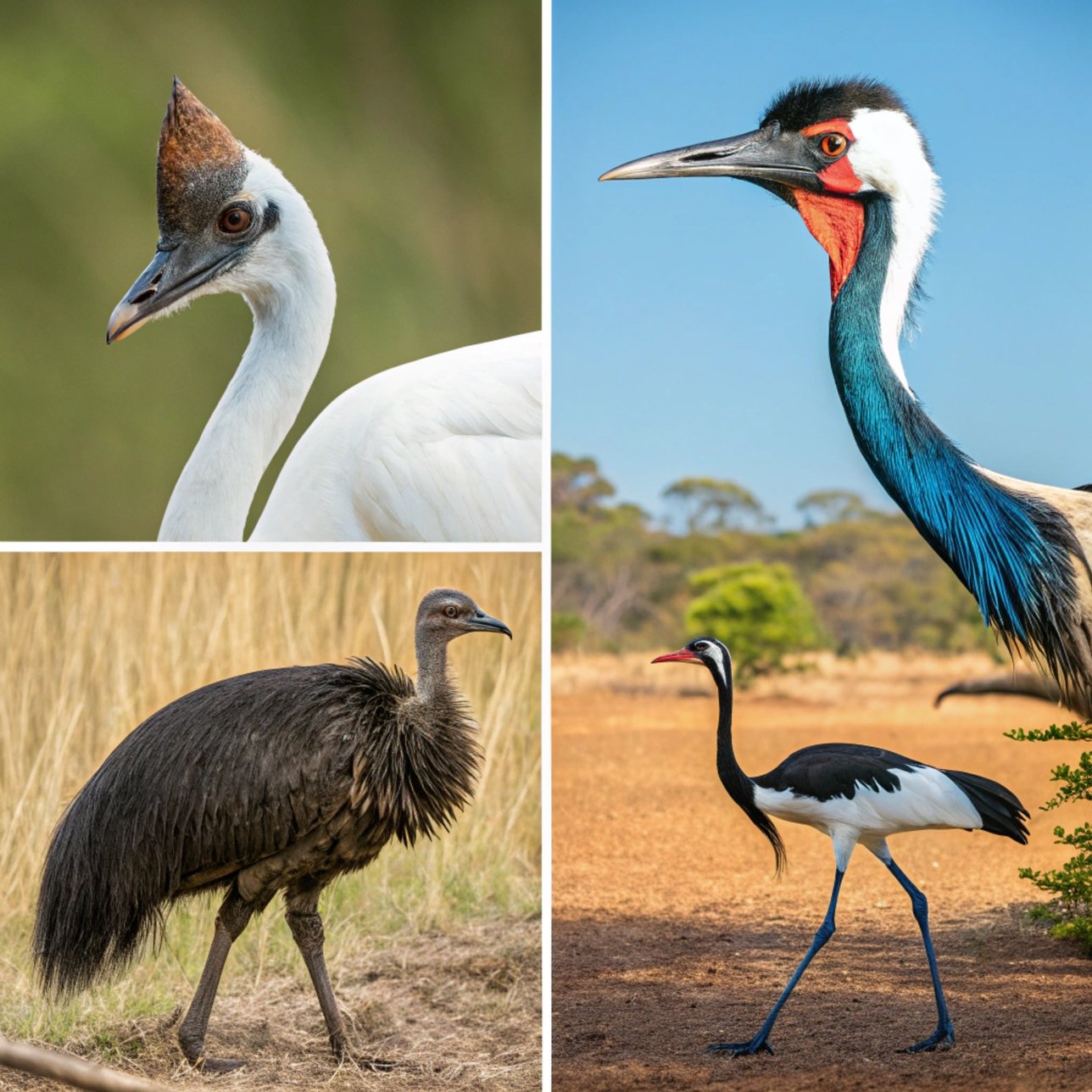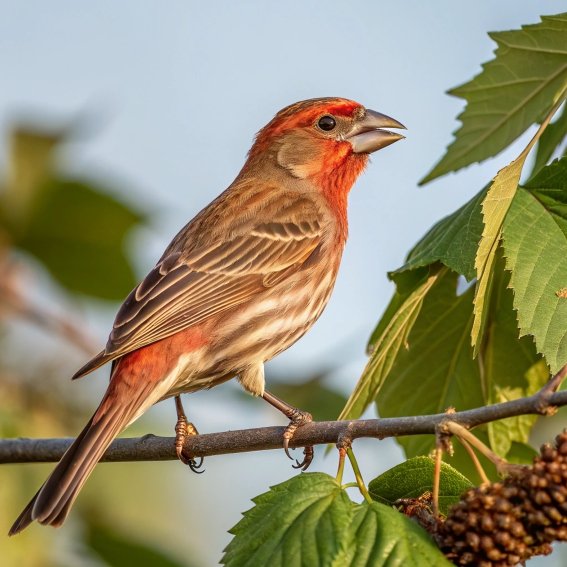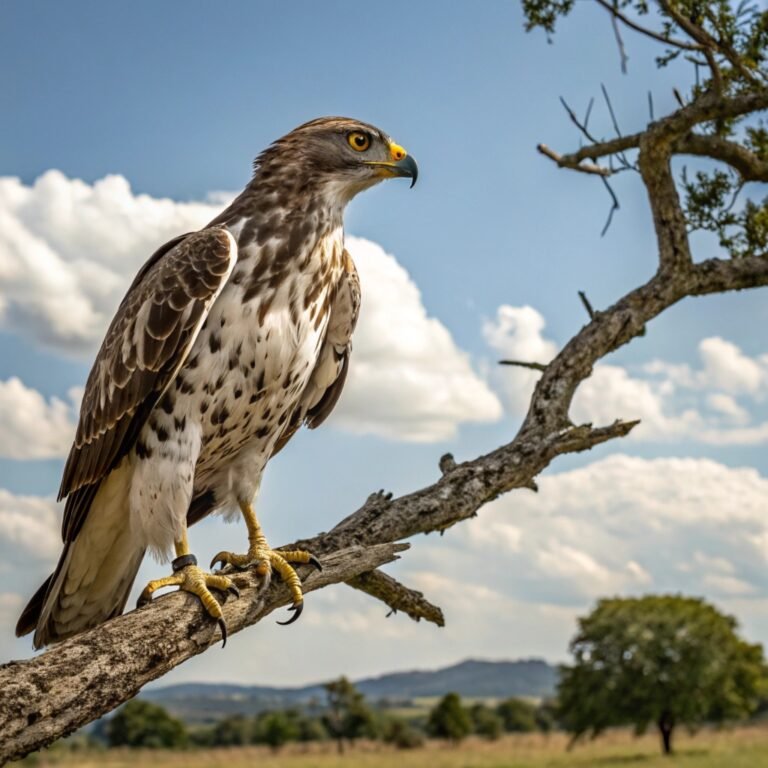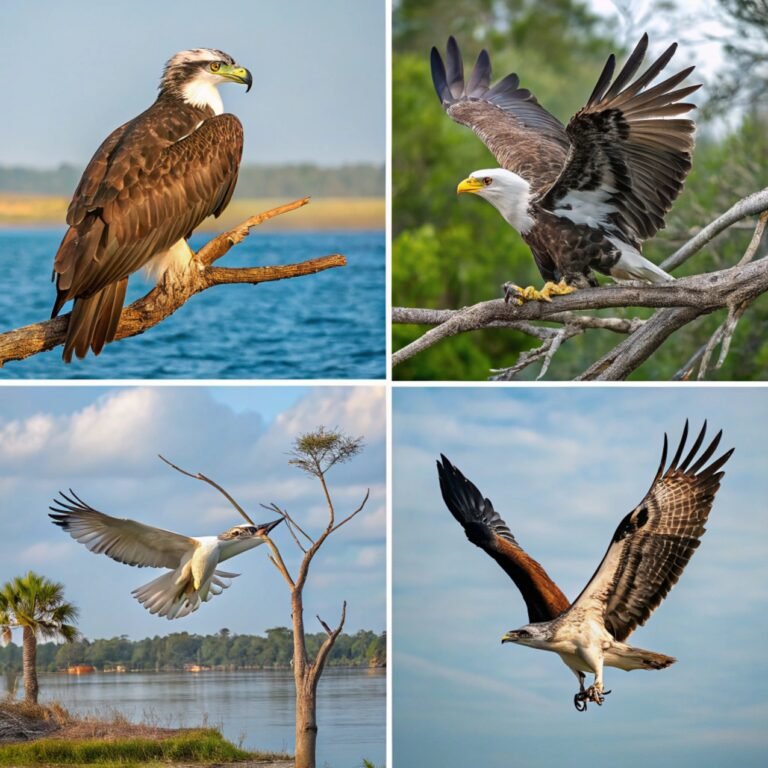10 Biggest Birds in the World – A Comprehensive Guide
In the vast and diverse world of avian species, some birds stand out not just for their beauty but for their sheer size.
These magnificent creatures, the giants of the bird kingdom, captivate our imagination and inspire awe.
From the sprawling savannahs of Africa to the dense rainforests of South America, the largest birds in the world inhabit a variety of ecosystems, each uniquely adapted to their environment.

Key Takeaways:
- Diversity in Size: The largest birds vary greatly in size, from the towering ostriches to the wide-winged albatrosses.
- Unique Adaptations: Each species has evolved unique adaptations that allow them to thrive in their specific habitats.
- Ecological Importance: These birds play crucial roles in their ecosystems, from seed dispersal to controlling insect populations.
- Conservation Concerns: Many of these species face threats from habitat loss and hunting, highlighting the need for conservation efforts.
- Cultural Significance: Large birds often hold significant cultural importance in the regions they inhabit, symbolizing strength and freedom.
Introduction to the World’s Largest Birds
The world of large birds is a fascinating realm filled with diverse species that have evolved to dominate their respective habitats.
These avian giants range from flightless runners to soaring masters of the sky, each with its own unique adaptations and characteristics.
The size spectrum of these birds is impressive, with some reaching heights of up to 9 feet and others boasting wingspans that exceed 11 feet.
Evolutionary pressures have shaped these birds over millions of years, resulting in specialized features that allow them to thrive in various environments.
From the ostrich’s powerful legs designed for speed to the albatross’s efficient wings for long-distance flight, each species showcases nature’s ingenuity in adapting to specific ecological niches.
Understanding these magnificent creatures not only satisfies our curiosity but also highlights the importance of biodiversity conservation.
Many of these large bird species face challenges due to habitat loss and human activities, making it crucial to study and protect them for future generations.
The Common Ostrich: The Giant of the Bird Kingdom
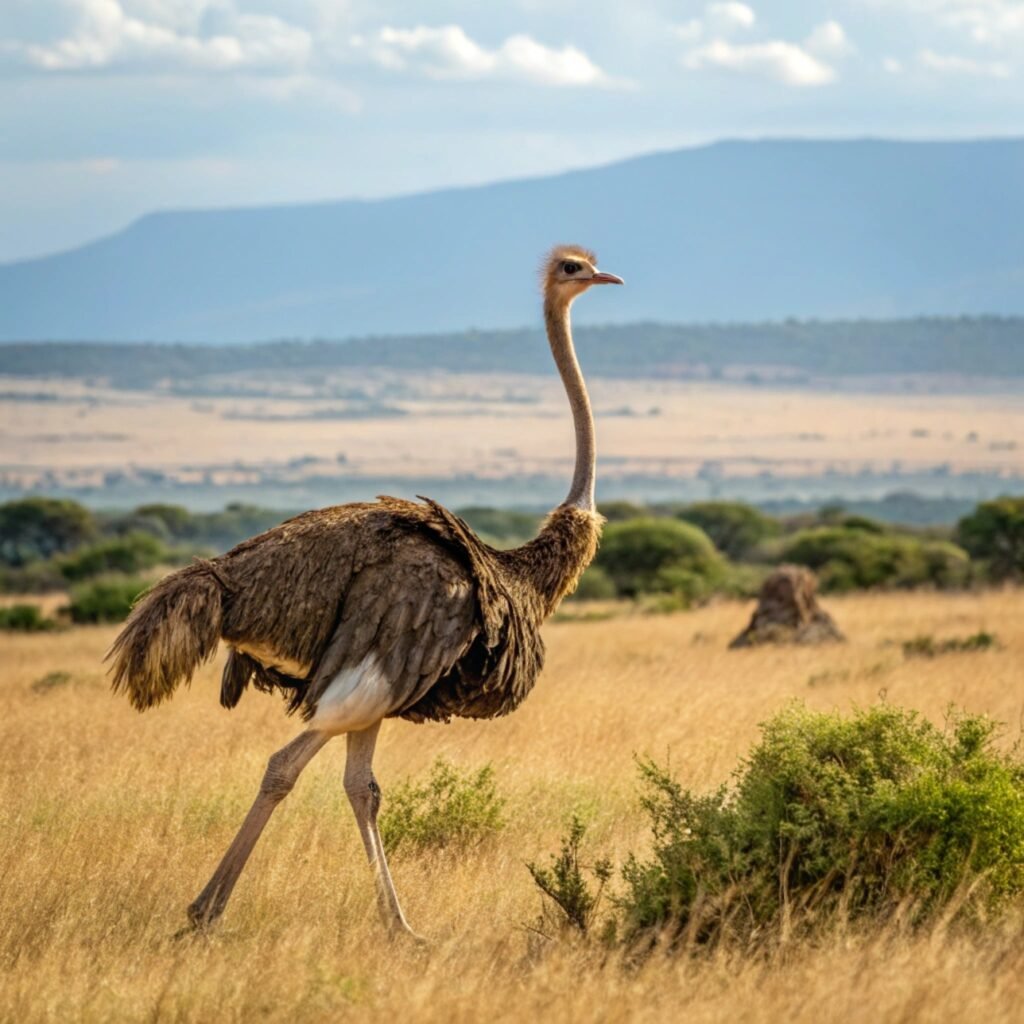
The Common Ostrich (Struthio camelus) reigns supreme as the largest and heaviest living bird on Earth. Native to the African continent, these impressive creatures can reach towering heights of up to 9 feet (2.7 meters) and weigh as much as 287 pounds (130 kg).
Their long necks and powerful legs make them a striking sight on the African savannas and grasslands.
Ostriches are flightless birds, but they compensate for this with incredible running speed. They can sprint at speeds up to 45 mph (72 km/h), making them the fastest birds on land.
This speed, combined with their powerful kicks, serves as an effective defense against predators.
These birds are omnivores, primarily feeding on plants but also consuming insects and small animals. Their large eyes and excellent vision help them spot potential threats from afar.
Interestingly, ostriches have the largest eggs of any bird species, with each egg equivalent to about 24 chicken eggs.
Exploring the Somali Ostrich: A Close Contender

The Somali Ostrich (Struthio molybdophanes), formerly considered a subspecies of the Common Ostrich, is now recognized as a distinct species.
This impressive bird is native to the Horn of Africa, particularly found in Somalia, Ethiopia, and northern Kenya.
While slightly smaller than its common counterpart, the Somali Ostrich still stands as one of the largest birds in the world.
Distinguishable by its unique blue-gray neck and legs during the breeding season, the Somali Ostrich can weigh up to 344 pounds (156 kg).
Like other ostriches, it is flightless but possesses remarkable speed and agility on the ground, using its powerful legs to outrun potential predators.
These birds play a crucial role in their ecosystem, helping to disperse seeds through their droppings and controlling insect populations.
However, habitat loss and hunting pose significant threats to their survival, making conservation efforts essential for their long-term preservation.
The Emu: Australia’s Largest Bird
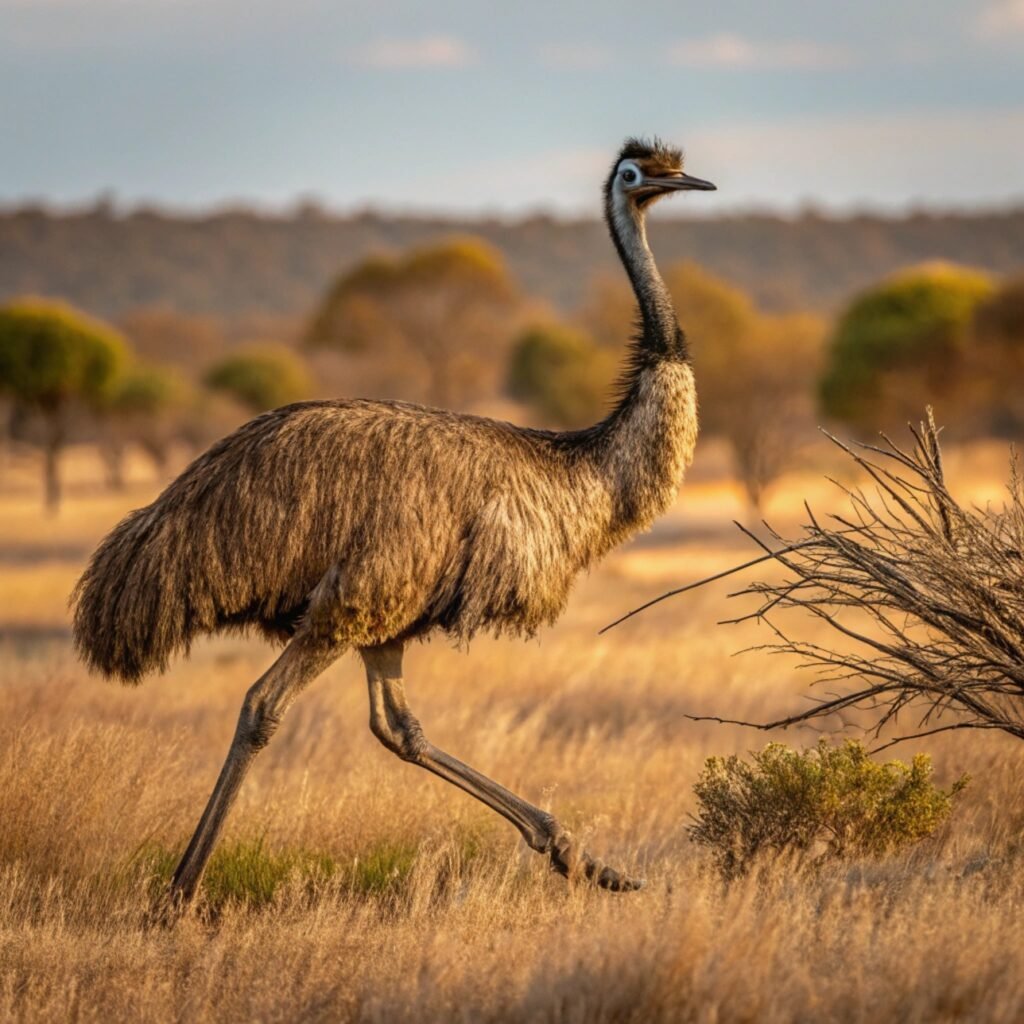
The Emu (Dromaius novaehollandiae) holds the title of Australia’s largest bird and is the only extant member of its genus.
These impressive birds can reach heights of up to 6.2 feet (1.9 meters) and weigh up to 132 pounds (60 kg). Their distinctive appearance, with long necks, long legs, and soft, brown feathers, makes them easily recognizable.
Emus are flightless birds but are excellent runners, capable of sprinting at speeds of up to 31 mph (50 km/h).
They use their strong legs not only for running but also for kicking to defend themselves against predators. These birds are omnivorous, feeding on a variety of plants, insects, and small animals.
In Australian culture, emus hold significant importance and are featured on the country’s coat of arms. They play a crucial role in seed dispersal across the Australian landscape, contributing to the maintenance of biodiversity in their habitats.
Despite their size, emus face threats from habitat loss and human activities, highlighting the need for conservation efforts.
Rheas: The South American Giants
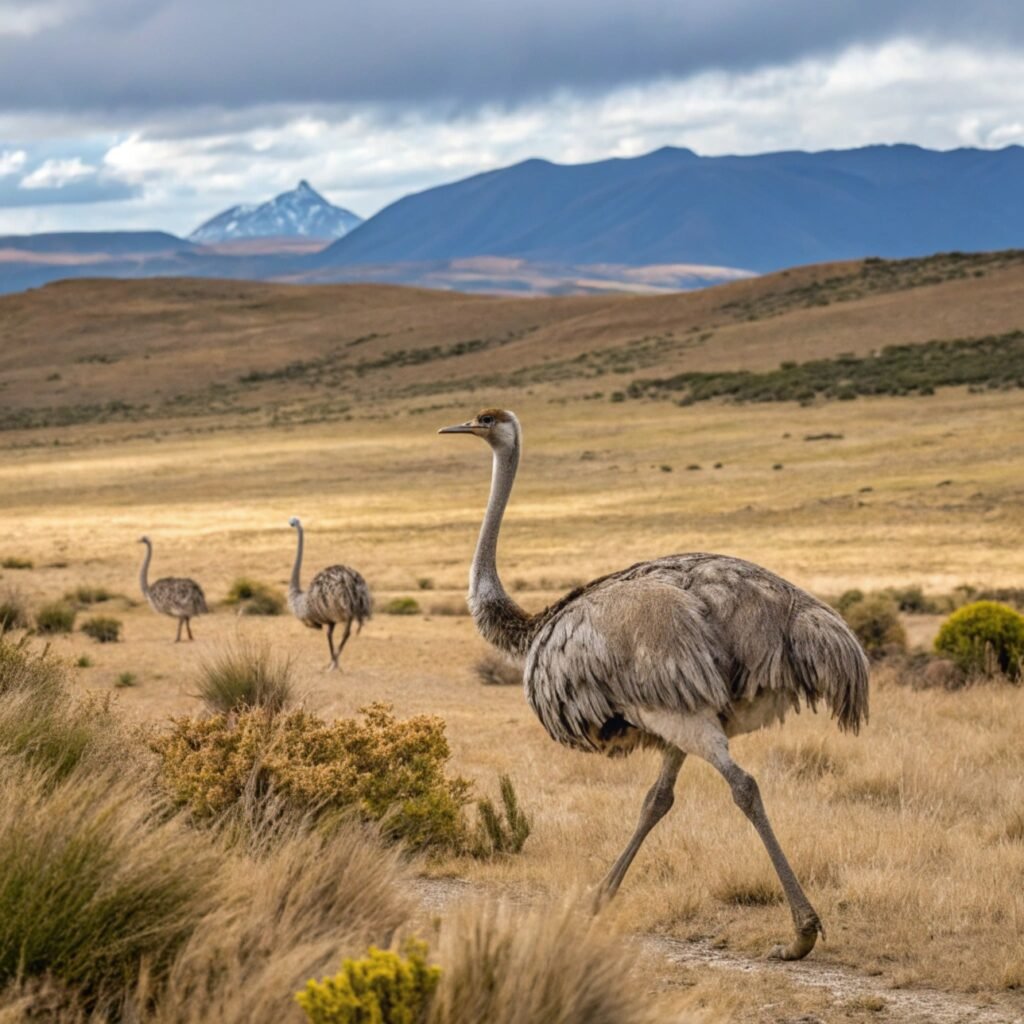
Rheas are large, flightless birds native to South America, comprising two species: the Greater Rhea (Rhea americana) and the Lesser Rhea (Rhea pennata).
These impressive birds are often referred to as the “South American ostriches” due to their similar appearance and behavior.
The Greater Rhea is the larger of the two species, standing up to 5.5 feet (1.7 meters) tall and weighing up to 88 pounds (40 kg).
They inhabit a range of habitats, including grasslands, savannas, and pampas across Argentina, Bolivia, Brazil, Paraguay, and Uruguay. Interestingly, a feral population has established itself in northern Germany after escaping from a farm in 2000.
Lesser Rheas are slightly smaller, reaching heights of about 3.9 feet (1.2 meters) and weighing up to 63 pounds (28.6 kg).
They are found in the Andean regions of South America, adapted to higher altitudes and cooler climates. Both species are omnivorous, feeding on plants, fruits, seeds, and small animals.
Cassowaries: The Rainforest Warriors
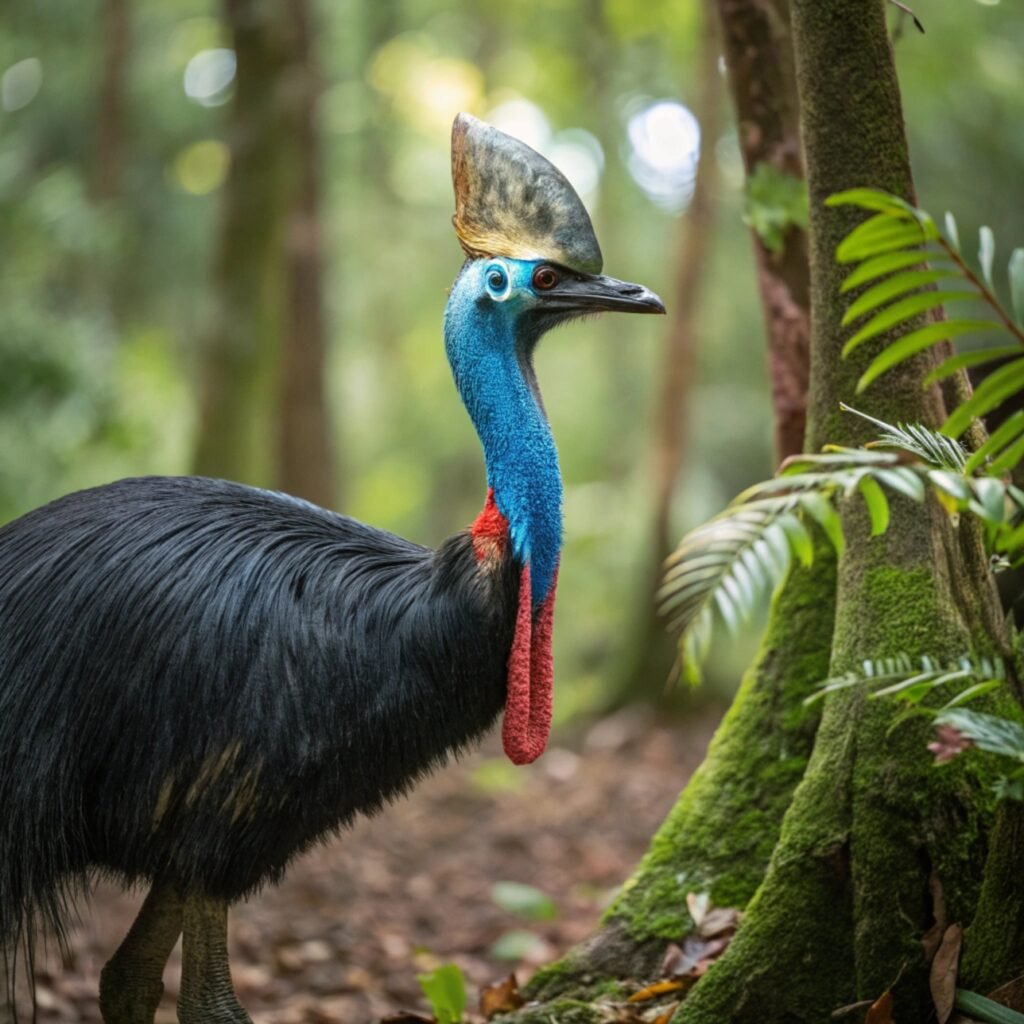
Cassowaries are large, flightless birds native to the tropical forests of New Guinea and northeastern Australia. There are three species of cassowary, with the Southern Cassowary (Casuarius casuarius) being the largest and most well-known.
These birds are known for their distinctive appearance, featuring a tall, bony casque on their heads and vibrant blue and red neck coloration.
Standing up to 6.6 feet (2 meters) tall and weighing up to 130 pounds (59 kg), cassowaries are formidable creatures. They possess powerful legs with sharp claws, which they can use for defense if threatened.
Despite their size, cassowaries are surprisingly agile and can run at speeds of up to 31 mph (50 km/h) through dense forest undergrowth.
Cassowaries play a crucial role in their ecosystems as seed dispersers. They consume a wide variety of fruits and excrete the seeds intact, helping to maintain forest biodiversity.
However, habitat loss and fragmentation pose significant threats to these magnificent birds, making conservation efforts essential for their survival.
The Wandering Albatross: Master of the Skies
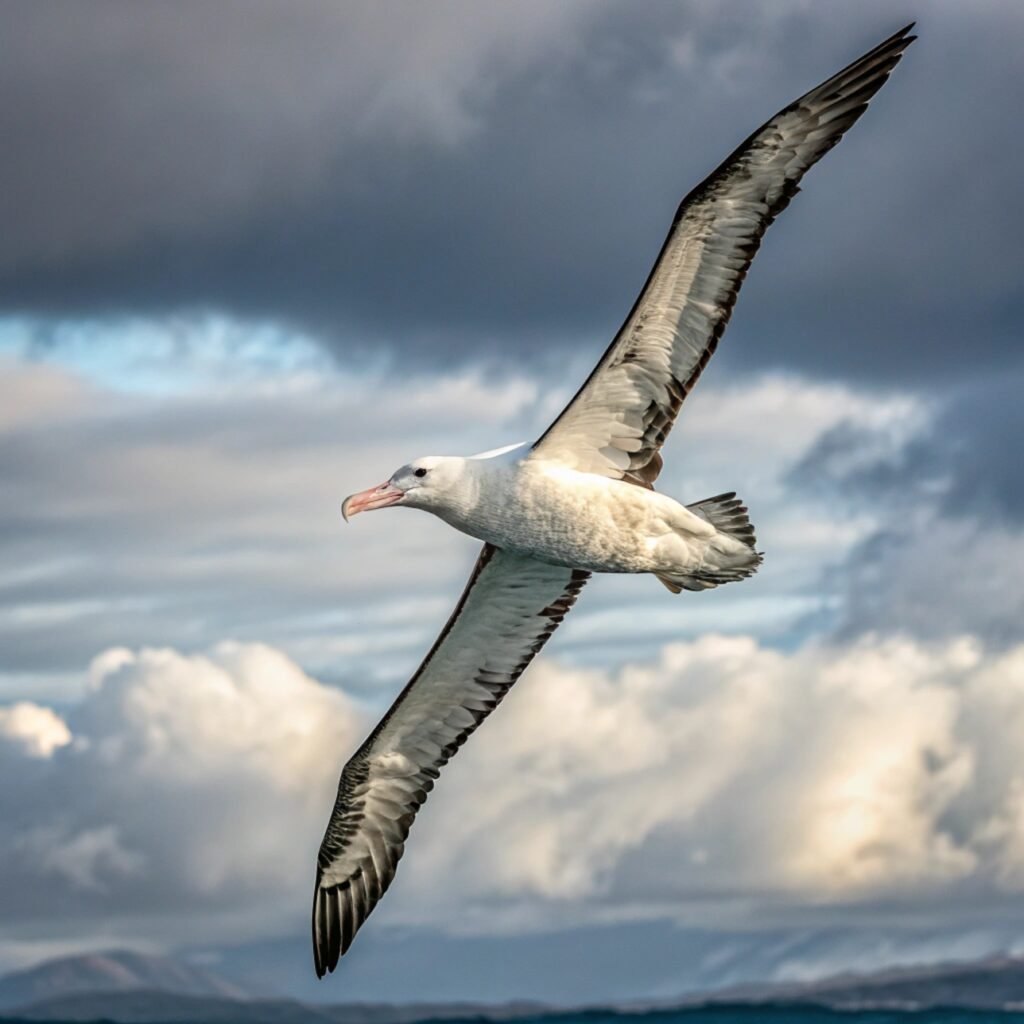
The Wandering Albatross (Diomedea exulans) holds the record for the largest wingspan of any living bird, with some individuals boasting wingspans of up to 11.5 feet (3.5 meters).
These magnificent seabirds are true masters of the air, spending most of their lives soaring over the vast Southern Ocean.
Despite their impressive wingspan, Wandering Albatrosses are relatively light for their size, weighing between 15 to 26 pounds (7 to 12 kg).
This combination of enormous wings and light body weight allows them to glide effortlessly for hours, covering great distances with minimal energy expenditure.
These birds are long-lived, with some individuals reaching ages of over 50 years. They form strong pair bonds and typically breed every two years on remote sub-Antarctic islands. Wandering Albatrosses face threats from longline fishing and marine pollution, making them a species of conservation concern.
The Kori Bustard: Africa’s Heaviest Flying Bird
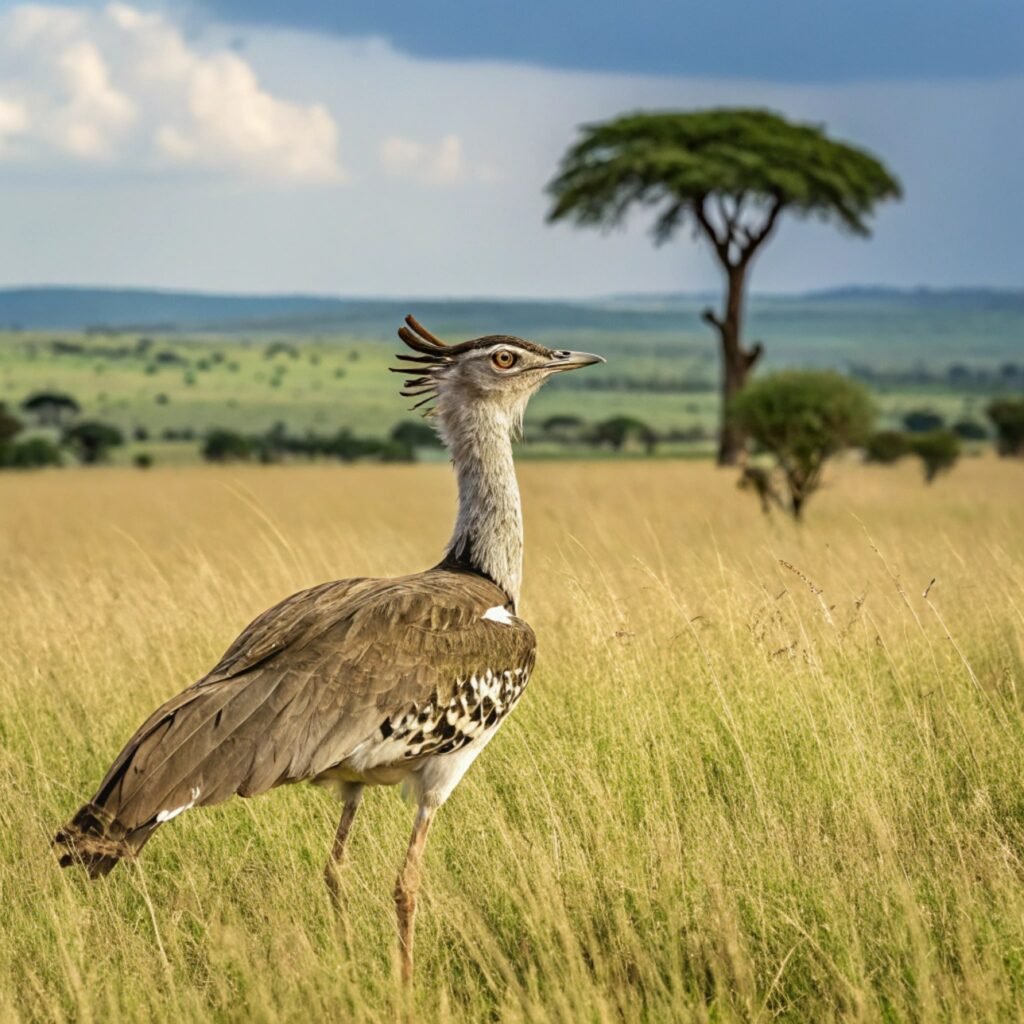
The Kori Bustard (Ardeotis kori) holds the title of Africa’s heaviest flying bird, with males weighing up to 44 pounds (20 kg).
Native to eastern and southern Africa, these impressive birds are found in grasslands, savannas, and lightly wooded areas.
Standing up to 4.9 feet (1.5 meters) tall, Kori Bustards have a distinctive appearance with their long necks, sturdy legs, and mottled brown plumage.
Despite their size, they are capable of flight, although they prefer to spend most of their time on the ground.
These birds are omnivorous, feeding on a variety of plants, insects, and small animals. During the breeding season, male Kori Bustards perform elaborate courtship displays, inflating their necks and strutting to attract females.
Unfortunately, habitat loss and hunting have led to population declines in some areas, making conservation efforts crucial for their survival.
The Andean Condor: The King of the Andes
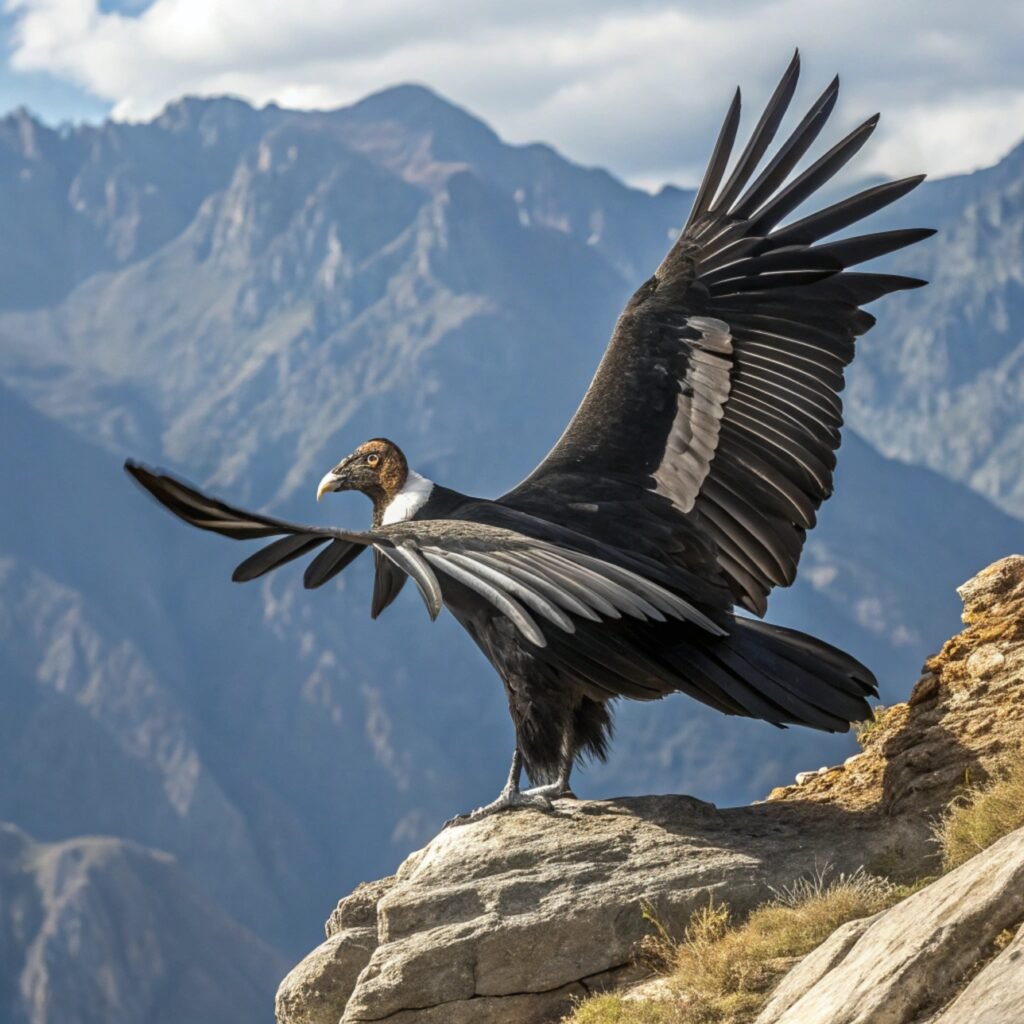
The Andean Condor (Vultur gryphus) is one of the largest flying birds in the world, with a wingspan that can reach up to 10.5 feet (3.2 meters).
Native to the Andes Mountains of South America, these majestic birds are symbols of power and freedom in many Andean cultures.
While not as heavy as some other large birds, Andean Condors can still weigh up to 33 pounds (15 kg).
Their distinctive appearance, with a bald head and neck that changes color according to their emotional state, makes them easily recognizable.
As scavengers, Andean Condors play a crucial role in their ecosystem by cleaning up carrion. They can soar at altitudes of up to 16,000 feet (5,000 meters), using thermal updrafts to conserve energy during flight.
Despite their size and impressive flying abilities, Andean Condors face threats from habitat loss and human persecution, making them a species of conservation concern.
The Dalmatian Pelican: Europe’s Largest Bird
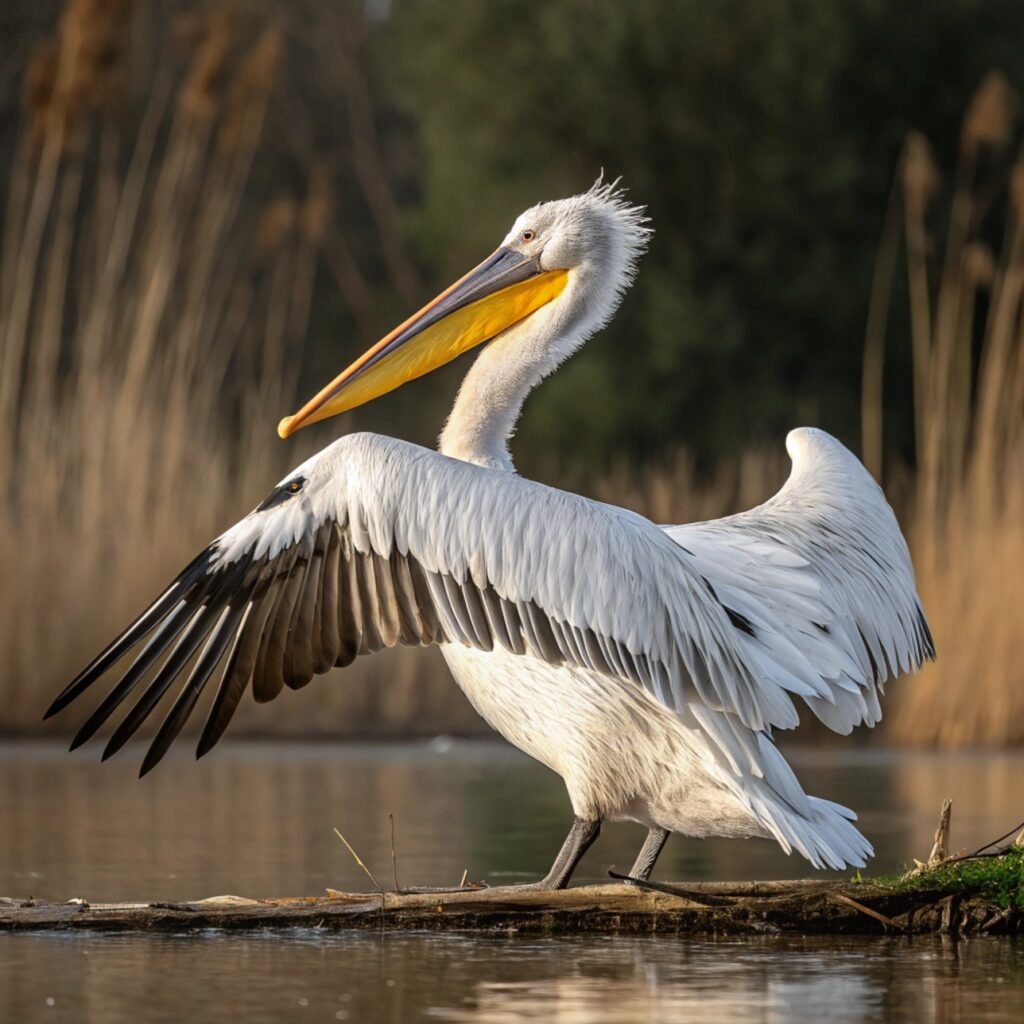
The Dalmatian Pelican (Pelecanus crispus) holds the title of Europe’s largest bird and is one of the heaviest flying birds in the world.
These impressive creatures can weigh up to 33 pounds (15 kg) and have a wingspan that can reach 11.5 feet (3.5 meters).
Native to eastern Europe, Russia, and parts of Asia, Dalmatian Pelicans are found in freshwater lakes, rivers, and coastal areas.
Their distinctive appearance, with silvery-white plumage and a massive, orange-red pouch beneath their bill, makes them a striking sight in their habitats.
These birds are excellent fishers, using their large bills and throat pouches to scoop up fish from the water. During breeding season, Dalmatian Pelicans form large colonies, often nesting on floating vegetation or small islands.
Despite their size and impressive adaptations, these birds face threats from habitat loss and disturbance, making conservation efforts crucial for their survival.
The Marabou Stork: Africa’s Scavenger Giant
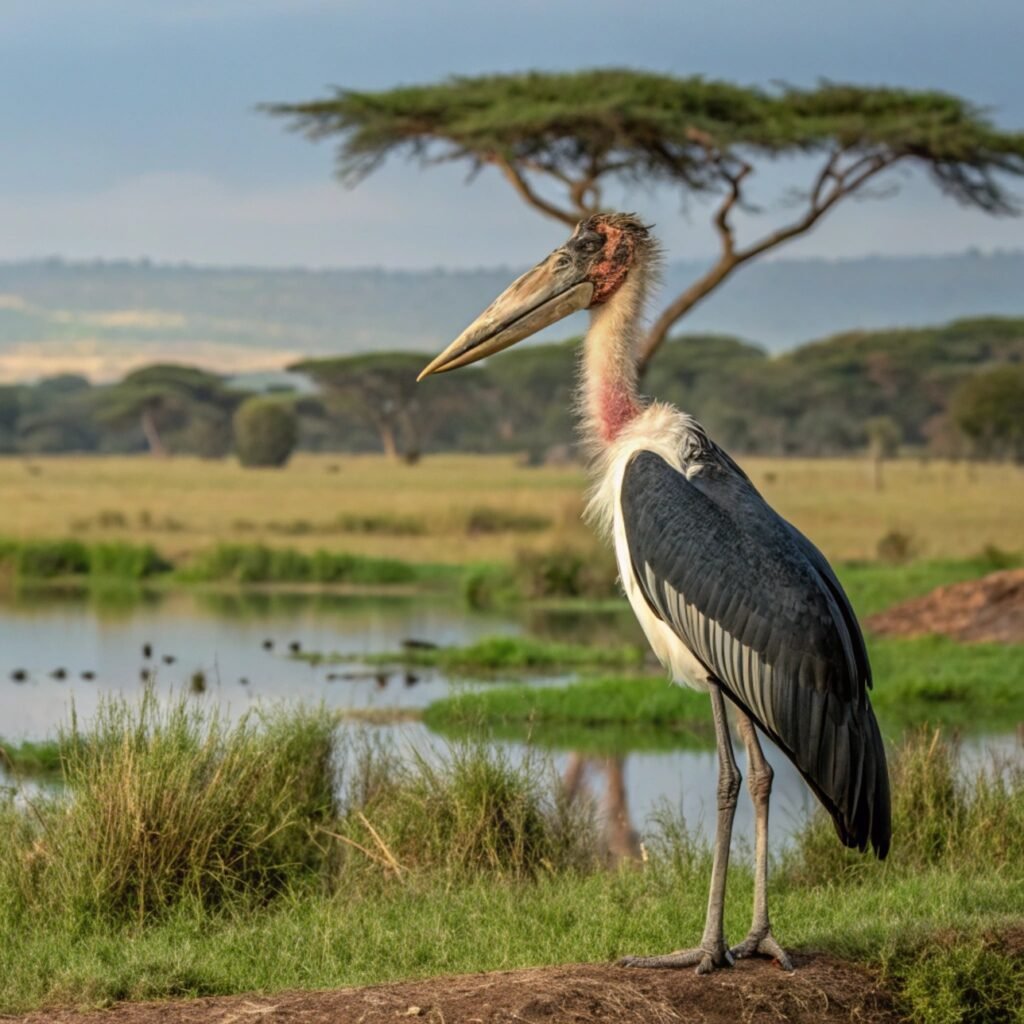
The Marabou Stork (Leptoptilos crumenifer) is one of Africa’s largest flying birds, known for its imposing size and somewhat unusual appearance.
Standing up to 5 feet (1.5 meters) tall and with a wingspan that can reach 10.5 feet (3.2 meters), these birds are a striking presence in their habitats across sub-Saharan Africa.
Despite their large size, Marabou Storks are relatively light for their stature, typically weighing between 9 to 18 pounds (4 to 8 kg).
Their most distinctive features include a bare head and neck, a large, pinkish pouch hanging from their throat, and long, sturdy legs.
These birds are primarily scavengers, playing a crucial role in their ecosystems by cleaning up carrion and waste. They are often found near human settlements, where they take advantage of garbage dumps and slaughterhouses.
While their appearance and habits may not endear them to everyone, Marabou Storks are an important part of Africa’s biodiversity and serve as indicators of environmental health.
Conclusion: The Fascination with Large Birds
The world of large birds is a testament to the incredible diversity and adaptability of avian species.
From the flightless giants of Africa and Australia to the soaring masters of the open oceans, these birds have evolved unique characteristics that allow them to thrive in their respective habitats.
Our fascination with these majestic creatures goes beyond their impressive size. They play crucial roles in their ecosystems, from seed dispersal to maintaining the balance of prey populations.
Many of these species also hold cultural significance in the regions they inhabit, often symbolizing strength, freedom, and the wild spirit of nature.
However, it’s important to recognize that many of these large bird species face significant challenges in the modern world. Habitat loss, climate change, and human activities pose threats to their survival.
As we continue to study and admire these magnificent birds, it’s crucial that we also prioritize their conservation. By protecting these species and their habitats, we not only ensure their survival but also preserve the rich biodiversity that makes our planet so extraordinary.
FAQs
What is the largest bird in the world?
The Common Ostrich (Struthio camelus) is the largest living bird in the world, reaching heights of up to 9 feet (2.7 meters) and weighing up to 287 pounds (130 kg).
Can all large birds fly?
No, not all large birds can fly. Some of the largest birds, like ostriches, emus, and cassowaries, are flightless. However, other large birds like the Wandering Albatross and Andean Condor are excellent flyers.
What is the bird with the largest wingspan?
The Wandering Albatross (Diomedea exulans) has the largest wingspan of any living bird, with some individuals having wingspans up to 11.5 feet (3.5 meters).
Are large birds endangered?
Many large bird species face conservation challenges. While not all are endangered, several species like the Andean Condor and some albatross species are considered vulnerable or threatened due to habitat loss, hunting, and other human activities.
What do large birds typically eat?
The diet of large birds varies depending on the species. Some, like ostriches and emus, are omnivores eating both plants and small animals. Others, like the Andean Condor and Marabou Stork, are primarily scavengers. Seabirds like the Wandering Albatross mainly feed on fish and squid.

Hello, I’m Emily Price, the founder of Birds Affection. As a passionate bird enthusiast and spiritual seeker, I’ve always been fascinated by the symbolic meanings and mystical connections between birds and our lives. On this website, I share my knowledge and insights on the spiritual significance of various bird species, exploring their roles as messengers, guides, and teachers. Through my writing, I aim to inspire and educate others on the profound wisdom and beauty that birds bring to our world. Join me on this journey as we delve into the enchanting realm of bird symbolism and discover the hidden meanings behind these magnificent creatures.

